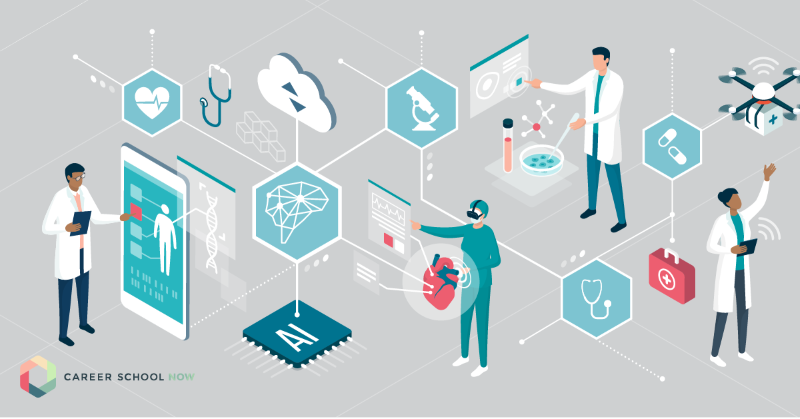Recognizing the Key Duties and Duties in Medical Administration
Recognizing the Key Duties and Duties in Medical Administration
Blog Article
Ideal Practices in Medical Management for Improving Efficiency and Minimizing Prices
In the ever-evolving landscape of healthcare, the search of best methods in medical administration is paramount for boosting effectiveness and curbing costs. By incorporating sophisticated technologies such as electronic health records and telemedicine, doctor can streamline operations and improve individual care. Modern technology alone is not a remedy; enhancing source allowance and cultivating collective interaction among treatment groups are equally vital. As companies make every effort to stabilize high quality and expense, what strategies should be focused on to achieve these double objectives? The response to these inquiries hold the secret to a more lasting medical care system.
Leveraging Advanced Modern Technology
In today's swiftly advancing medical care landscape, leveraging advanced innovation is no more optional however necessary for reliable medical administration. The combination of electronic remedies right into health care systems has actually transformed the method centers operate, simplifying procedures and improving patient care. Electronic Health Records (EHRs) are essential, giving extensive patient data that can be accessed immediately by authorized workers, thus minimizing redundancy and decreasing errors. By streamlining individual info, EHRs remove the need for troublesome documentation and help with seamless communication among healthcare companies.
Telemedicine is one more technological improvement that has actually changed client interaction. It supplies convenience for both individuals and healthcare professionals by enabling remote examinations, which can minimize the requirement for in-person visits and maximize visit organizing. Additionally, telehealth systems can extend healthcare access to country or underserved locations, connecting spaces in treatment distribution.
Moreover, using Artificial Knowledge (AI) and artificial intelligence is ending up being progressively widespread in predictive analytics, enabling early detection of possible health concerns and even more informed decision-making. These innovations, when integrated effectively, can improve analysis accuracy and personalize client treatment strategies, eventually resulting in boosted health care results and operational effectiveness.
Optimizing Source Allowance
By strategically managing resources such as workers, equipment, and funds, healthcare centers can significantly boost their operational performance, boost patient end results, and lower unnecessary expenditures. The first step in enhancing resource allotment involves performing a detailed assessment of current properties and identifying locations where sources may be underutilized or overextended.
Prioritizing resource appropriation based on individual demands and solution demands is vital. This involves straightening sources with high-demand areas, such as emergency treatment or specialized therapies, to guarantee prompt and effective individual care. Executing adaptable staffing versions can likewise enhance labor sources by adjusting employees allowance in response to rising and fall patient volumes. Furthermore, accepting telemedicine and various other technological solutions can minimize physical source restrictions by supplying different avenues for patient-provider communications.
Funds should be diligently monitored and alloted with calculated foresight to support both temporary operational requirements and long-term institutional goals. This consists of investing in training programs that boost personnel competencies and embracing energy-efficient methods that reduce operational expenses (medical administration). Ultimately, an enhanced source allowance strategy cultivates a sustainable healthcare setting that is receptive, reliable, and monetarily sensible
Streamlining Workflow Procedures
When medical care centers aim to improve operational effectiveness, improving operations processes becomes a pivotal focus. Efficient process decrease redundancy, get rid of unneeded actions, and boost control among health care professionals. This approach not only increases service distribution yet also enhances the quality of person care.

Next, click innovation integration plays a substantial duty in enhancing workflows. Executing digital health records (EHRs) and electronic doctor order entrance (CPOE) systems lowers documentation, reduces human error, and guarantees details is accessible to all appropriate employees. Additionally, leveraging telemedicine platforms can enhance person consultations and follow-ups, lowering the pressure on physical infrastructure.

Eventually, structured workflows cause set you back decreases and improved person satisfaction, fostering an extra sustainable medical care atmosphere.
Enhancing Information Management
Structure upon structured process, enhancing information monitoring becomes an essential component beforehand medical care management. Efficient information monitoring systems are vital for preserving accurate client documents, enhancing decision-making, and guaranteeing conformity with regulatory standards. By carrying out durable information administration services, medical care facilities can enhance the top quality of client care while simultaneously minimizing functional costs.
One key aspect of enhancing information administration is the assimilation of advanced digital health record (EHR) systems. These systems facilitate the smooth exchange of client information throughout various divisions, reducing duplication of examinations and reducing mistakes. A well-designed EHR system supports information analytics, making it possible for health care carriers to identify fads and make educated decisions concerning patient care.
Additionally, protecting patient data is critical. Embracing detailed cybersecurity procedures, including file encryption and normal audits, ensures the integrity and privacy of sensitive information. This not only protects individuals however also preserves the organization's credibility.
Buying team training is one more vital element. Informing medical care specialists on information monitoring practices improves their ability to efficiently make use of technology, bring about boosted person results. In final thought, enhancing information administration through sophisticated technology and detailed training is essential for achieving efficiency and price decrease in medical administration.
Fostering Collaborative Communication
A vital element ahead of time clinical management is promoting collaborative interaction among health care specialists. Reliable interaction is vital for ensuring smooth individual care, enhancing treatment outcomes, and reducing mistakes. By encouraging open dialogue and coordination throughout multidisciplinary teams, health care organizations can improve their operational performance and lower unneeded expenses.
Central to this approach is the combination of interaction technologies such as electronic health records (EHRs) and safe messaging platforms, which assist in the rapid exchange of crucial try here person information. These devices allow doctor to accessibility and share information in genuine time, making sure websites that all team members are informed and straightened in their decision-making procedures. Moreover, normal group meetings and interdisciplinary rounds can additionally promote a culture of cooperation and responsibility.
Educating programs concentrated on enhancing communication skills are also necessary. These programs can aid staff develop the capability to convey info clearly and listen actively, thus lowering misunderstandings and cultivating an encouraging workplace. Furthermore, embracing standardized interaction methods, such as SBAR (Circumstance, Background, Evaluation, Referral), can simplify the exchange of information, making certain that important information are shared succinctly and effectively. Inevitably, fostering collaborative interaction brings about enhanced health care distribution and price savings (medical administration).

Verdict
Including advanced modern technology, such as digital health and wellness records and telemedicine, along with enhanced resource allotment and structured workflow procedures, is important for improving efficiency in medical administration. Effective information monitoring and promoting joint communication among healthcare teams are crucial for decreasing redundancies and enhancing treatment top quality. By focusing on precautionary treatment and participating in top quality renovation campaigns, healthcare organizations can accomplish considerable expense financial savings and boosted person end results, thereby guaranteeing lasting health care distribution in a significantly intricate atmosphere.
Report this page